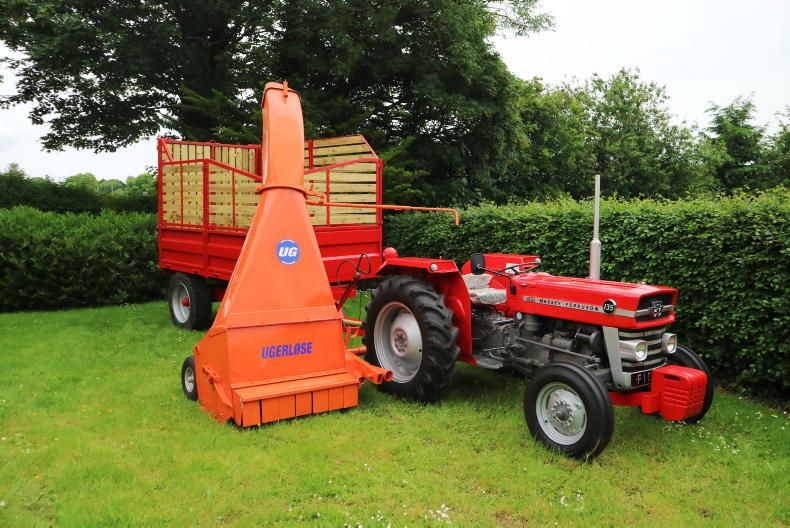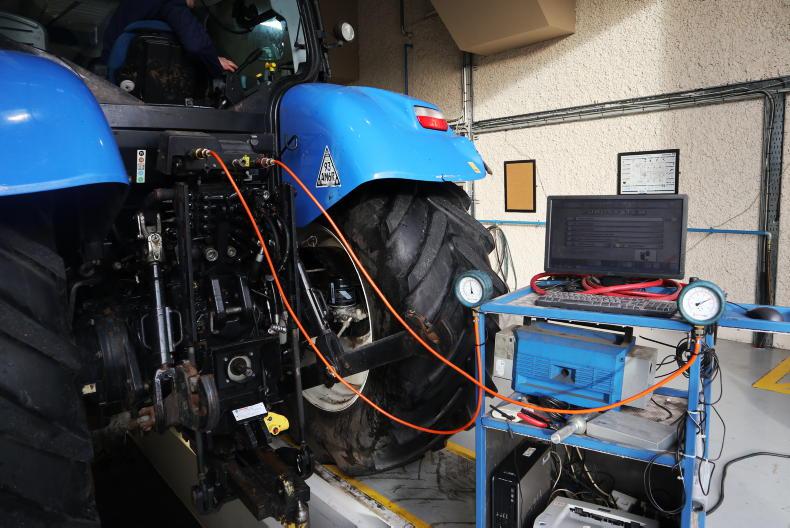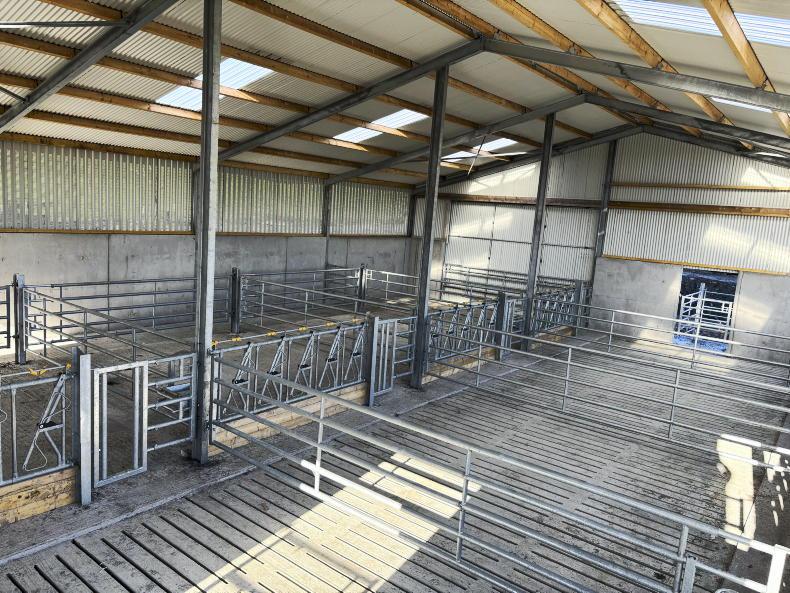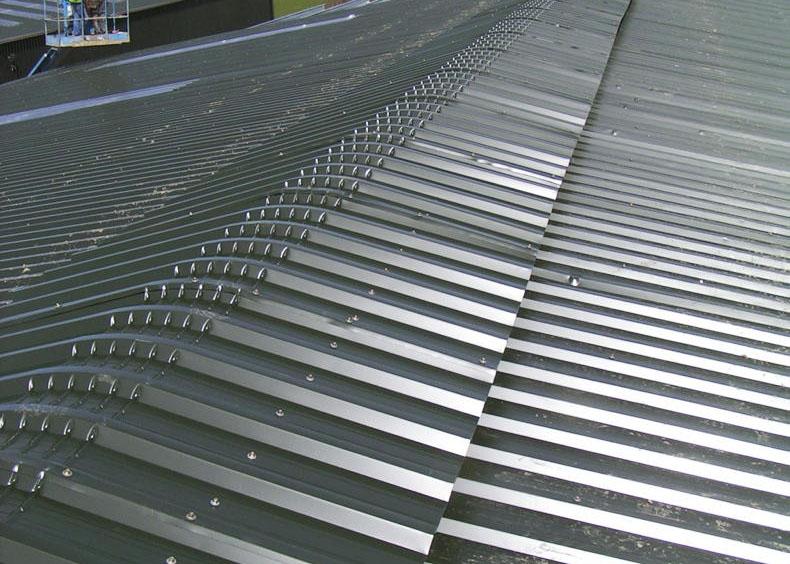In 2010, when Robert Dagg and his father David purchased a Massey Ferguson in piece form, they hadn’t planned on getting to where they are today. The tractor was in a neighbour’s shed for approximately 10 years and some of it arrived to their shed in boxes.
They have managed to trace the history of the tractor back to its purchase in 1971 from Flynns of Tullow.
It then spent some years in the south of Co Carlow before returning to the Tullow area.
When the little Massey was with its previous owner, it used to mow grass on the Dagg farm. The tractor has been known to David for a long number of years.
The tractor received a full nut and bolt restoration. During the process, as many of the original parts as possible were salvaged. The bonnet is completely original, while the mudguards were refurbished by the Daggs.
Robert is a qualified mechanical engineer and his dad is a talented mechanic, so between them they had the skills to do all the fabrication and mechanical work in-house.

High standard
The standard of the fabrication work is very high. Even the weight holder was recreated exactly to the dimensions of an original Massey item.

Once the tractor was finished up, it was given a final polish in 2013 after three years of work. It was decided that some sort of implement was required to finish off the look.
Finding the right piece was important. In 2015, Robert spotted a very rare Danish-built UgerlØse 1100 advertised in Kilkenny. They went and had a look. It wasn’t pretty, but that just made it interesting.
They set about the very rare double-chop and found it to be a fairly simple piece of kit. It took them four months to get the UgerlØse to the condition it is in today.
It is believed that the machine is from the late 1950s or early 1960s and they have only seen one or two more of them in Ireland. The only bit of history that the lads got about their machine was that it had been used to keep grass cut around a large stately home in the Kilkenny area in its latter working years.

The harvester is now fully functioning. Once the harvester was finished, the obvious next step was a period trailer to finish the outfit. The bones of a previously fire-damaged trailer was resurrected and, using their fabrication skills, the stunning last piece of the jigsaw was created. The trailer was completed over a period of three months last year.

Now with the outfit complete, the only thing required is grass. Working these machines is an art form and also a test of anyone’s patience. When asked whether they had plans to work the machines, they said that they had done some testing and it worked very well.
Speed is not this outfit’s strong point, with the slightly cumbersome unhitching and hitching process of the harvester. Once the shaft is disconnected from the tractor and the latch is released, you pull away with the trailer full of grass and abandon the harvester in the field.
Robert said that it would be the sort of job you would charge by the hour rather than by the acre. With a cutting width of 1.1m, the little Massey is able for the feed of grass except in the heaviest of crops and, in this case, a three-quarter cut can be taken to reduce the power requirement.
This outfit is a credit to its owners and it is nice to see a full farming system from a bygone era restored to pristine working condition. When you look at the way mechanisation has gone now, restorations like this remind us of how different things were in the past.
Read more
Machinery news: new Valtra, Schaffer loader, robotic weeding and vintage silage
In 2010, when Robert Dagg and his father David purchased a Massey Ferguson in piece form, they hadn’t planned on getting to where they are today. The tractor was in a neighbour’s shed for approximately 10 years and some of it arrived to their shed in boxes.
They have managed to trace the history of the tractor back to its purchase in 1971 from Flynns of Tullow.
It then spent some years in the south of Co Carlow before returning to the Tullow area.
When the little Massey was with its previous owner, it used to mow grass on the Dagg farm. The tractor has been known to David for a long number of years.
The tractor received a full nut and bolt restoration. During the process, as many of the original parts as possible were salvaged. The bonnet is completely original, while the mudguards were refurbished by the Daggs.
Robert is a qualified mechanical engineer and his dad is a talented mechanic, so between them they had the skills to do all the fabrication and mechanical work in-house.

High standard
The standard of the fabrication work is very high. Even the weight holder was recreated exactly to the dimensions of an original Massey item.

Once the tractor was finished up, it was given a final polish in 2013 after three years of work. It was decided that some sort of implement was required to finish off the look.
Finding the right piece was important. In 2015, Robert spotted a very rare Danish-built UgerlØse 1100 advertised in Kilkenny. They went and had a look. It wasn’t pretty, but that just made it interesting.
They set about the very rare double-chop and found it to be a fairly simple piece of kit. It took them four months to get the UgerlØse to the condition it is in today.
It is believed that the machine is from the late 1950s or early 1960s and they have only seen one or two more of them in Ireland. The only bit of history that the lads got about their machine was that it had been used to keep grass cut around a large stately home in the Kilkenny area in its latter working years.

The harvester is now fully functioning. Once the harvester was finished, the obvious next step was a period trailer to finish the outfit. The bones of a previously fire-damaged trailer was resurrected and, using their fabrication skills, the stunning last piece of the jigsaw was created. The trailer was completed over a period of three months last year.

Now with the outfit complete, the only thing required is grass. Working these machines is an art form and also a test of anyone’s patience. When asked whether they had plans to work the machines, they said that they had done some testing and it worked very well.
Speed is not this outfit’s strong point, with the slightly cumbersome unhitching and hitching process of the harvester. Once the shaft is disconnected from the tractor and the latch is released, you pull away with the trailer full of grass and abandon the harvester in the field.
Robert said that it would be the sort of job you would charge by the hour rather than by the acre. With a cutting width of 1.1m, the little Massey is able for the feed of grass except in the heaviest of crops and, in this case, a three-quarter cut can be taken to reduce the power requirement.
This outfit is a credit to its owners and it is nice to see a full farming system from a bygone era restored to pristine working condition. When you look at the way mechanisation has gone now, restorations like this remind us of how different things were in the past.
Read more
Machinery news: new Valtra, Schaffer loader, robotic weeding and vintage silage


















SHARING OPTIONS